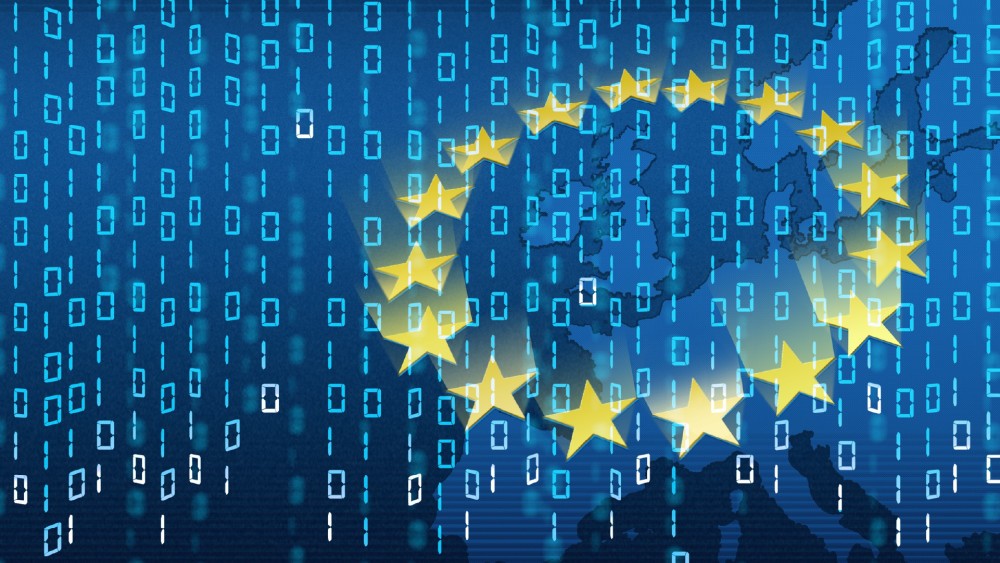Galileo Green Lane: A European digital platform for smart and solidarity-based logistics

A Europe tested by crises
In early 2020, the COVID-19 pandemic severely disrupted European logistics, posing unprecedented challenges to the seamless flow of goods across internal borders. Recognizing the urgent need to ensure the uninterrupted supply of essential items — such as food, medicines, and medical equipment — the European Commission implemented the Green Lane initiative. These dedicated corridors within the Trans-European Transport Network (TEN-T) guaranteed a maximum border-crossing time of 15 minutes for freight vehicles, including necessary checks. This rapid, innovative response not only secured vital logistics during a critical period but also laid the foundation for a digital transformation in Europe's transportation infrastructure.
An innovative European solution
Programme (EUSPA), the Galileo Green Lane platform leverages Europe's own Galileo satellite navigation system to monitor border-crossing times in real time. By integrating data from diverse external traffic providers and smartphone applications used directly by drivers, the platform accurately estimated freight transport delays at border crossings.
Two specialized mobile applications were developed: one for truck drivers, offering anonymous, real-time information about border conditions, optimal routing suggestions, and proximity-based alerts; and another one dedicated to border authorities, enabling them to manage crossings proactively by updating traffic conditions and issuing immediate notifications to drivers.
This innovative system transformed border management during the pandemic by significantly reducing delays, enhancing transparency, and providing critical real-time insights, thereby safeguarding Europe's logistics continuity and resilience during one of its most challenging periods.
Open and flexible technology architecture
The Galileo Green Lane system adopts a microservices-based architecture, allowing for easy scalability, rapid maintenance, and seamless integration of new features. This modular approach ensures adaptability and responsiveness to emerging logistics challenges.
Applications for mobile devices were developed using Kotlin technology, ensuring compatibility and optimized user experiences on both Android and iOS. Additionally, the platform extensively incorporates open-source solutions such as OpenStreetMap for mapping and GraphHopper for intelligent routing, maximizing reliability and performance. The flexibility of this architecture allowed smooth integration of data from multiple sources — traffic data providers, like TomTom and Here or railway trips information, provided by Railway Network Europe (RNE), or even the data collected from the APPs developed for drivers and border authorities — offering a comprehensive real-time logistics overview.
Concrete results and practical validation
A successful pilot conducted along the Atlantic Corridor (Portugal, Spain, France) validated the effectiveness of the Galileo Green Lane platform, demonstrating tangible improvements in border-crossing efficiency. This was highlighted by Portugal’s ANTRAM (National Association of Road Freight Carriers), emphasizing substantial benefits such as improved logistics planning, operational efficiency, and notably reduced waiting times.
Official reports from EUSPA confirmed the immediate and positive impact of the Galileo Green Lane platform during the pandemic, underscoring its strategic importance. Logistics operators experienced significantly fewer disruptions, improved route management, and more predictable delivery times, greatly benefiting the European supply chain during a critical period.
From Green Lane to Solidarity Lane: Responding to the Ukraine crisis
Following its proven success, the platform evolved rapidly to address another critical challenge—the armed conflict in Ukraine. This adaptation resulted in the creation of the Solidarity Lanes, a dedicated response to support logistics between Ukraine and the EU, ensuring continuous humanitarian aid and essential goods flow amid the conflict.
The enhanced platform introduced advanced railway monitoring functionalities, providing detailed information on dwell times at railway borders and directional data for freight trains. Advanced reporting capabilities delivered detailed analytics, enabling swift, informed decisions to address urgent humanitarian needs. Meanwhile, the original road functionalities remained fully operational, ensuring comprehensive multimodal support through a single integrated solution.
A strategic platform for European mobility
By delivering independent, accurate, and timely data on transport infrastructure conditions, Galileo Green Lane has become an essential tool for European authorities. It informs strategic decisions, policy formulation, and future infrastructure investment planning, thereby actively shaping the future of European mobility.
A connected, agile, and solidarity-driven Europe
Galileo Green Lane exemplifies Europe's capability to apply technological innovation swiftly and effectively in response to unforeseen challenges. The platform's success during the COVID-19 pandemic and its critical role amid the Ukraine crisis highlight the practical benefits of innovation-driven logistics management.
As Europe continues to navigate complex global challenges, Galileo Green Lane was a leading example of how digital technology can reinforce the resilience, agility, and solidarity of the European Union. Looking ahead, this platform sets a robust foundation for future digital initiatives, ensuring Europe remains interconnected, innovative, and prepared for any logistical or humanitarian challenge that arises.
A foundation built for the future, powered by GMV
The technological success of the Galileo Green Lane platform is no coincidence — it reflects GMV’s long-standing expertise in designing and implementing mission-critical systems based on robust, flexible architectures. The adoption of a microservices-based approach is emblematic of GMV’s commitment to scalable, maintainable, and future-ready digital platforms, tailored to respond to real-world complexity and rapid change. This architectural choice not only enabled seamless updates and cross-border coordination during the pandemic and Ukraine crisis, but also positioned the platform as a blueprint for modern, data-driven logistics infrastructure.
With decades of experience in satellite navigation, intelligent transport systems, and secure software development, GMV is uniquely positioned as a key enabler of Europe’s digital transformation in mobility. Its role in co-developing and continuously evolving the Galileo Green Lane platform underscores its capacity to deliver strategic solutions — ones that are not only technologically advanced but also aligned with Europe’s values of resilience, openness, and solidarity.
Author: Bruno Gonçalves